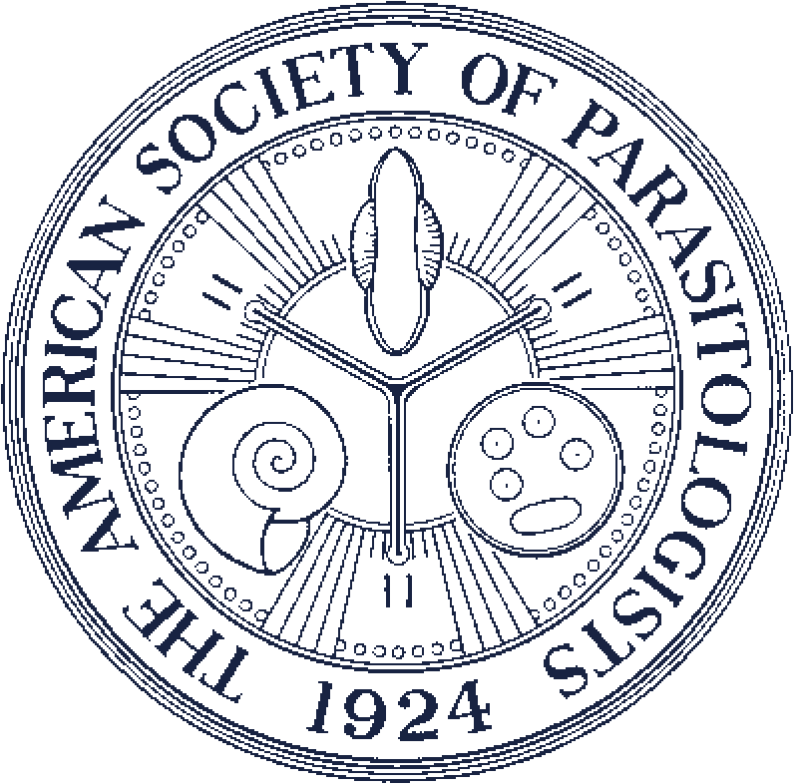APOLOCYSTIS BOSANQUETI N. SP. (APICOMPLEXA: EUGREGARINORIDA) FROM THE INVASIVE EARTHWORM AMYNTHAS AGRESTIS (ANNELIDA: MEGASCOLECIDAE), WITH SIGNIFICANCE FOR THE MONOPHYLY OF THE FAMILY MONOCYSTIDAE
Apolocystis bosanqueti n. sp., a parasite of an important invasive earthworm in North America, Amynthas agrestis, is described from a site in northern Vermont. The earthworm host follows an annual life cycle in Vermont, so the entire life cycle of the parasite can be observed in 7 mo. In spring, the parasites were first seen in juvenile worms as paired gamonts (suggesting precocious association). These paired gamonts mature into gametocytes that form an opaque structure, with a thick gelatinous envelope (epicyst), that becomes full of zygotes. The resulting gametocyst becomes packed with ∼105 fusiform oocysts. The mature orbicular gametocysts are large (∼1 mm in diameter) and visible to the naked eye through the body wall of the host's anterior segments. The new species most resembles Apolocystis herculea described from many lumbricid earthworm species in Europe but differs from that parasite because Ap. herculea infects the intestinal wall in the posterior of the host rather than the anterior segments. A survey of 9 other earthworm species sympatric with Am. agrestis revealed that only Amynthas tokioensis, also an invasive species, was infected with Ap. bosanqueti, albeit much less commonly. Diagnosis for the family Monocystidae is problematic because cardinal characters are lacking, and the commonly cited character, a trophozoite with no anterior differentiation, is violated in most genera placed in the family. For the first time, a molecular phylogeny is presented that includes 3 genera of monocystids with diverse cell morphology (including the new species) and supports the monophyly of the family. The only morphological character that may be used to diagnose the Monocystidae is the morphology of oocysts, which are fusiform with extended terminal tips. A comparison of oocysts from 7 parasites recovered from local earthworms, including from 3 monocystid species in the phylogeny, confirms the utility of this diagnostic trait. The 2 hosts of the new species were most likely introduced from Japan, so the range of Apolocystis likely extends into East Asia.ABSTRACT

Life stages of Apolocystis bosanqueti n. sp. in the earthworm Amynthas agrestis. (A) Pairs of gamonts in association within the host tissue; nuclei are visible. (B) Pair of gamonts within host tissue in close association; nuclei visible. (C) Later paired gamonts now within an early gametocyst. (D) Paired gamonts in early opaque gametocyst. (E) Gametocytes in syzygy, very opaque, and nuclei very faint. (F) Zygotes within a mature gametocyst. (G) Zygotes developing into early oocysts; heavy arrows to zygotes and light arrows to early oocyst. (H) Mature gametocyst, completely opaque, showing thick envelope (epicyst). (I) View of gametocyst, now full of oocysts, and thick epicist. (J) Anterior segments of host earthworm with mature gametocysts visible though body wall, with largest gametocyst ∼1 mm in diameter. (K) Dissected anterior of earthworm showing gametocysts as white spheres, largest ∼1 mm. (L) Mature oocysts.

Phylogenetic tree for gregarine species from several families for 18 taxa showing species names and GenBank accession numbers including 2 new monocystid sequences shown in bold (Apolocystis bosanqueti n. sp. and Stomatocystis goerresi). Family codes are L = Lecudinidae; M = Monocystidae; A = Actinocephalidae; As = Ascogregarinidae; S = Selenidiidae; G = Gregarinidae. Shown is a Neighbor-Joining tree with genetic-distance bar (very similar topology for a Bayesian tree). Basal nodes with strong support (>0.99) by both Bayesian (posterior probabilities) and neighbor-joining methods (bootstrap values) are indicated with dots, and one node with high support only by Bayesian analysis shown with an open point.

Oocysts (shown at same scale) from 3 known monocystids, also showing their gamonts in association (Stomatocystis, and Apolocystis) or gametocytes in syzygy (Monocystis). Also shown are oocysts from 4 other species of likely monocystids recovered from earthworms at the study site. (A) Oocyst from introduced European earthworm Dendrobaena octaedra. (B) Oocyst from earthworm Amynthas agrestis. Gametocysts of this species produce 5–10 oocysts. (C) Monocystis perplexa from Am. agrestis. (D) Stomatocystis goerresi from Amynthas tokioensis. (E) Oocyst from D. octaedra. (F) Apolocystis bosanqueti from Am. agrestis. (G) Oocyst from a species that produces small (∼100 μm diameter) gametocysts attached to the posterior gut of Am. agrestis.
Contributor Notes
Version of Record, first published online with fixed content and layout, in compliance with ICZN Arts. 8.1.3.2, 8.5, and 21.8.2 as amended, 2012. ZooBank publication registration: urn:lsid:zoobank.org:pub:B1CCA4BA-DA2F-4F19-B422-70D21001C27B.
